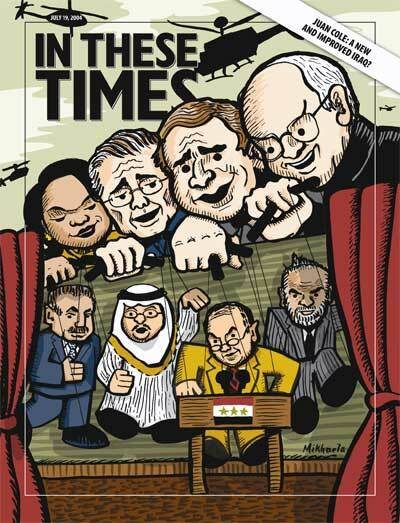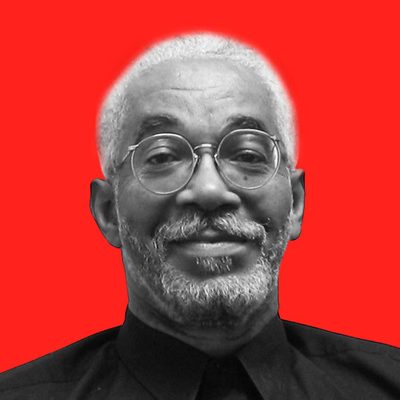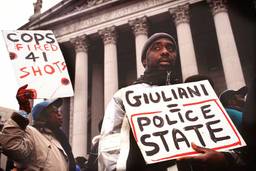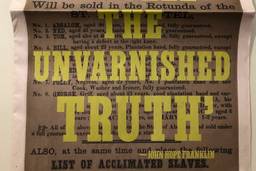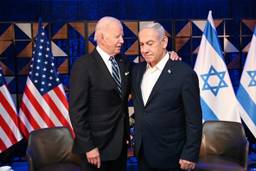“Police Secretly Watching Hip-Hop Artists” read the headline of the Miami Herald article that put the spotlight on a practice that has grown more ominous at the same time that hip-hop has grown more popular.
As Nichole White and Evelyn McDonnell reported on March 9, “Miami and Miami Beach police are secretly watching and keeping dossiers on hip-hop celebrities like P. Diddy and DMX and their entourages when they come to South Florida.” Police officials told the Herald they photographed rappers as they arrived at Miami International Airport and staked out hotels, nightclubs and video shoots. The reporters explained that dozens of major and minor rappers are listed and tracked in a “6-inch thick” binder supplied by the New York City Police Department (NYPD).
Rap artists and others associated with hip-hop culture have long complained of being targets of police harassment. New York, the birthplace of hip-hop music, has become the de facto center of hip-hop intelligence. A special NYPD unit is dedicated to hip-hop surveillance, according to The Village Voice. Police officials downplay the reports. They insist hip-hop cops are a small part of the intelligence division’s gang unit and that they simply try to preempt the kind of violence that seems to follow hip-hop artists.
But the NYPD’s response sparked more questions: Why is hip-hop associated with gangs? Why the intelligence division?
Those preemptive strategies apparently are being adopted by police forces in other cities. The Herald noted that the NYPD hosted a three-day “hip-hop training session” in May 2003 attended by officers from “other major cities like Los Angeles and Atlanta.”
Miami officials said they were compelled to do a crash course on hip-hop after realizing their city was becoming a favorite destination. But just like their big-city mentors, Miami cops’ actions are being driven by stereotypes. “A lot of, if not most, rappers belong to some sort of gang,” Miami Police Sergeant Rafael Tapenes told the Herald. Law enforcement conflates gangs and hip-hop because young black men are at the core of both — the same black youth who have had problems with American law enforcement since the days of the slave patrols.
Even before recent revelations of hip-hop surveillance units, in March 2003, The Source declared in a headline: “State of Emergency: Hip-Hop Under Attack.” The magazine, the country’s largest hip-hop oriented publication, sounded the alarm about attacks from the increasingly influential cultural right and more intrusive police scrutiny. It featured an interview with a New York City cop who admitted that a special unit existed specifically to monitor, even harass, hip-hop figures. The unidentified cop told The Source that these efforts were aided by an increased focus on security after 9/11, which “opened up avenues for the government to change laws and violate public rights.”
Some see motives that are even more nefarious. Cedric Muhammad, publisher of the webzine BlackElectorate.com and former manager of the hip-hop collective Wu-Tang Clan, ran a series linking police harassment of rappers to the infamous COINTELPRO programs of J. Edgar Hoover’s FBI. Muhammad recently wrote a public letter to the Miami Herald, suggesting that reporters should shift the focus of attention beyond police harassment and racial profiling, “properly placing it where it belongs — at the federal level.”
The feds already have used antiterrorism strategies to crack down on domestic street gangs, and some officials have even linked such gangs to terrorism. Muhammad writes that linking gangsta rappers to genuine gangsters allows a COINTELPRO-like program to continue under the guise of homeland security, thus preempting the potential for a militant mass movement of black people.
Of course, hip-hop made itself an easy target. A large part of the genre’s appeal is its flamboyant roguishness. The ghetto-centric sensibilities and crime-laced narratives that dominate so much of the genre offer a vicarious escape for some and, perhaps, a how-to manual for others.
Hip-hop artists often project images that skirt the edges of respectability, posturing a hard, “no sell-out” image, even as they rake in mainstream bucks. And then there are the “beefs” — the feuds that too often have jumped off records into reality. What’s more, critics increasingly complain that rap lyrics go beyond promoting violence and crime to self-hatred and misogyny. And these complaints are most strenuous within the African-American community, not the FBI.
Issues like these are sure to be addressed at the National Hip-Hop Political Convention (www.hiphopconvention.org) taking place in Newark, N.J., as this issue goes to press. The mid-June event gathered activists, politicians, scholars and hip-hop artists from across the country to discuss ways to empower the so-called hip-hop generation. I’m sure the police are watching.
Salim Muwakkil is a senior editor of In These Times and host of “The Salim Muwakkil Show” on radio station WVON-AM in Chicago. Muwakkil was also contributing columnist for both the Chicago Sun-Times (1993 – 1997) and the Chicago Tribune (1998 – 2005). He is also a co-founder of Pacifica News’ network daily “Democracy Now” program and served as an adjunct professor at Northwestern University, University of Illinois, the Art Institute of Chicago and Chicago’s Columbia College.
